campus2.0
Im Rahmen von Campus 2.0 wird die dynamisch wachsende Bewegung acar2 ihre ersten Ergebnisse und ihre ehrgeizigen Ziele präsentieren. Die Teilnehmer werden sich intensiv mit neoanalogem Design, der zur Zeit vielleicht aufregendsten Bewegung auf dem Gebiet des Designs, beschäftigen.
acar2 basiert auf der Idee, dass das traditionelle Handwerk im Kontext der „Smart Materials“ (intelligenter, adaptiver Werkstoffe) und des Bedarfs an intuitiven Interfaces eine neue strategische Relevanz bekommt. In Kombination mit High-Tech-Produktionsmethoden, mit denen Produkte auf individuelle Nachfrage hergestellt werden können, wird ein völlig neues Kapitel in der Kunst des Designs und der Produktion aufgeschlagen. Das postindustrielle Design von acar2 ist ein großer Entwicklungsschritt vom altbekannten Artefakt hin zum prozessualen Actefact.
Erste Lösungsansätze zur Bewältigung solch spannender ökonomischer, funktionaler und ästhetischer Herausforderungen werden anhand von 60 Arbeiten von acht Designhochschulen gezeigt. Zu den acar2-Netzwerkpartnern gehören u.a. die Universität der Künste Berlin, der Studiengang Interface Culture der Kunstuniversität Linz und der Studiengang Medienkunst der Hochschule für Gestaltung und Kunst in Aarau (Schweiz). Außerdem zählen dazu: ein Netzwerk französischer Architekten, eine Kooperation zwischen der Parsons New School of Design in New York und der Estnischen Akademie der Künste in Talinn, die Köln International School of Design und der Studiengang Interface Design der Fachhochschule Potsdam.
acar2 geht auf eine Initiative des Schweizer Instituts für Postindustrielles Design HyperWerk an der HGK FHNW zurück. In den vergangenen sechs Monaten hat das Team unter der Leitung von Prof. Mischa Schaub bewiesen, dass es ihm auf subtile Weise dank der Kunst des prozessualen Designs gelungen ist, eine neue kreative Community ins Leben zu rufen.
campus2.0
Universität der Künste Berlin
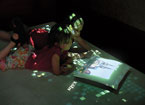
more
campus2.0
Kunstuniversität Linz
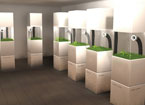
Die Master- und Doktoratsstudierenden der Studienrichtung „Interface Cultures“ des Instituts für Medien an der Kunstuniversität Linz hatten in den letzten beiden Jahren Gelegenheit, ihre interaktiven Studienprojekte in den *Campus*-Ausstellungen den Festivals Ars Electronica 2005 und 2006 erfolgreich einem internationalem Fachpublikum vorzustellen. Die diesjährigen Projekte für *Campus 2.0* charakterisieren sich durch thematische Schwerpunktsetzung auf „Physical Computing“ und „Hybrid Interfaces“. Der im Interface Cultures Department entwickelte Interfacebegriff wird durch die Verlinkung zu anderen künstlerischen und handwerklichen Disziplinen wie etwa Textildesign, Industrial Design oder Raumdesign erweitert. Die interaktiven Arbeiten umfassen originelle und innovative Interaktionsideen in den Bereichen intelligente Möbel, smarte Kleidung und intelligente Environments, interaktives Spielzeug, Pervasive Gaming, neue analoge und digitale Musikinstrumente sowie technische, künstlerische und angewandte interaktive Protoypen und hybride Systeme. www.interface.ufg.ac.at, www.interface.ufg.ac.at, www.interface.ufg.ac.at
Apply for the M.A. Interface Cultures study program! Date for entrance examination interviews during the festival:
Monday, September 10th, 2007
To apply and to get more information about the study program and the application please contact: Dorothée Gestrich mail:dorothee.gestrich@ufg.ac.at
Exhibition Coordination: M.A. Dorothée Gestrich Staff Scientist Interface Cultures
more
campus2.0
Hochschule für Gestaltung und Kunst, Fachhochschule Nordwestschweiz (HGK FHNW), Institut Medienkunst Aarau/CH
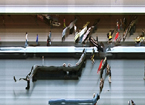
more
campus2.0
FH Potsdam - Interface Design
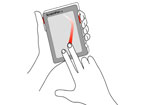
more
campus2.0
FABRIQUE. Network of architectures
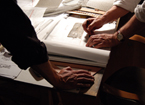
Christelle Chalumeaux, Katarina Dubravkova, Claude Valentin
Wir haben ein Netzwerk aus Architekten, Handwerkern und Akademikern gegründet, das in Senones gemeinsam am Projekt ACAR2 arbeitet. Unser Ziel ist es, postindustrielle Räume zu konzipieren und zu konstruieren, mögliche konkrete und auch gesellschaftspolitisch relevante Lebensräume, die die Gepflogenheiten und Sachzwänge des Menschen von heute berücksichtigen. Die Architektur ist für uns ein Experiment, wobei wir uns in erster Linie auf den Aspekt des Körperlichen, der Gestik konzentrieren, um Architektur von innen heraus wahrzunehmen und das Gebilde im Werden zu beobachten.Diese offene Plattform versteht sich als ein Ort der Produktion und des kritischen Austauschs von Wissen und Know-how. Wir betrachten Interdisziplinarität heute als eine unabdingbare Voraussetzung für unsere Entwicklung und die Qualität unserer Projekte. Je nach Aufgabenstellung formiert sich ein Kollektiv, um bestimmte konzeptionelle Probleme, die sich während des Projekts ergeben, zu lösen und zu bewältigen oder zumindest Lösungsansätze zu entwickeln. Abgesehen von den Mitgliedern wird das Netzwerk auch von pädagogischen Institutionen, Forschungslabors sowie den folgenden innovativen Einrichtungen unterstützt:
ENSAN, École Nationale Supérieure d’Architecture (Architekturhochschule), Nancy
CRAI, Centre de Recherche en Architecture et en Ingénieurie (Forschungszentrum für Architektur und Projektplanung), Nancy
ARTEM, Kooperationsbündnis der Hochschule für Wirtschaft ICN in NancyArchitekturbüro
HAHA und HOUOT Raumplanung, in Saint Nabord
IGAE, Innenarchitektengruppe in Paris
Christelle Chalumeaux Architecte, Paris
more
campus2.0
Fashionable Technology - Parsons The New School For Design & Estonian Academy of Arts
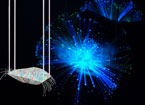
Fashionable Technology looks at end users as fashionable beings, attentive to style, aesthetics, branding, and the expressive potential of wearable technologies. It refers to all design objects that are associated with aesthetics, wearability, or some degree of mobility. Thus, it includes experiments with enhanced materials, technologies, or electronic textiles, as well as testing the effects of the interaction with the objects. It deals with the aspect of craft and technology in a novel manner focusing on aspects of a ‘new generation of wearables’.
The projects presented are executed during the collaboration studio called “Fashionable Technology” at Parsons The New School For Design in New York during the Spring 2007 semester led by Sabine Seymour and Alison Lewis and the workshop course also entitled "Fashionable Technology" at the Estonian Academy of Arts in Tallinn during the Fall 2006 semester led by Sabine Seymour. In a contextual analysis, developed in group projects, the aspects of communication, aesthetics and functionality with a specific focus on the idea of dynamic surfaces were revealed and further defined. This required a parallel understanding of embedded system design, networked environments, and interdisciplinary design issues that validated the feasibility of such (wearable) dynamic surfaces.
The diverse background of students in the studio coming primarily from the department Communication, Design, Technology at Parsons offered the ability to play with physical computing and design at the same time. The students from the textile department in Tallinn brought a fantastic insight of textile design using the Estonia as a backdrop for their projects.
Institutions
Communication Design + Technology at Parsons The New School For Design is a department and a collective design force of over 700 students and faculty engaged in work ranging from typographic exploration to geek graffiti, book design to game design, information visualization to animation. The programs in Communication Design (CD) and Design and Technology (DT) form a dual curricula that emphasizes experimentation, collaboration and social activism in the design of media experiences and new narratives for all kinds of people, in all kinds of places, around the world.
The Department of Textile Design at the Estonian Academy of Arts focuses on two main areas of specialty know-how - weaving and fabric printing, with specialisation on creating clothing and furniture fabrics. Specialty subjects will introduce the student to designing unique textiles and industrial products, interior decoration principles, printing, dying and weaving techniques, knitting, felting, material studies, history of textile and applied arts, and ethnography.
more
campus2.0
The "Fischtisch" group
more
campus2.0
The "structurate (tm)" group
more
campus2.0
KISD - Köln International School of Design/Analogic Scounting
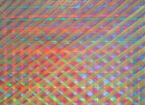
more
campus2.0
HyperWerk Institute for Postindustrial Design HGK FHNW
more
campus2.0
Symposium - talks on the neoanalog
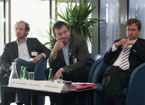
more